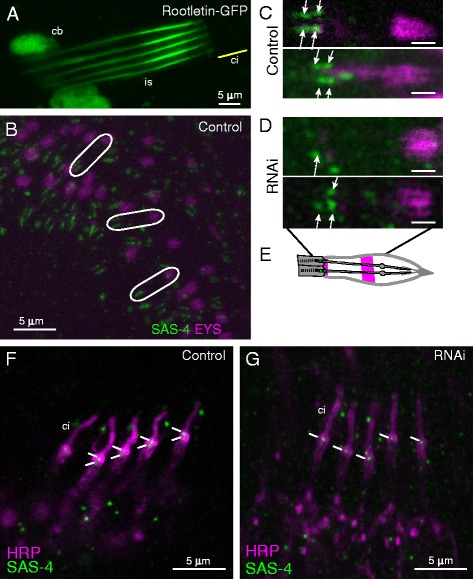Fig. 4.

Rootletin knock-down disrupts basal body structure. a Ch neurons (lch5) of unfixed third instar larva transgenic for Rootletin-GFP partial fusion protein showing strong localisation to the inner segment (is) extending from the base of the cilium (ci, approximate location shown by yellow line). Some expression is also observed in the cell bodies (cb). b–d Ch neurons of pupal antenna visualised with anti-Eys (magenta) and anti-Sas-4 (green) antibodies. b Wild type at low magnification. White ellipses indicate single chordotonal organs, each with two neurons, with two pairs of Sas-4 staining puncta representing the centrioles. Eys is mainly seen in a distal band surrounding the cilium but also at the base of the cilium (a pattern similar to anti-HRP). c High magnification view of two examples, white arrows indicate two pairs of Sas-4 puncta representing two centrioles for each neuron. Scale bar = 1 μm. d Rootletin knock-down. Images show two possible phenotypes of either just one Sas-4 punctum or two Sas-4 puncta missing from each chordotonal organ. Scale bar = 1 μm. e Schematic representation of the Sas-4 and Eys protein localisation within the Ch organs in wild-type antenna. f, g Immunofluorescence analysis of stage 17 embryonic Ch neurons (lch5 cluster) visualised with anti-HRP (magenta) and anti-Sas-4 (green). White lines indicate the positions of Sas-4 staining associated with the centrioles. f Wild type. g Rootletin knock-down
